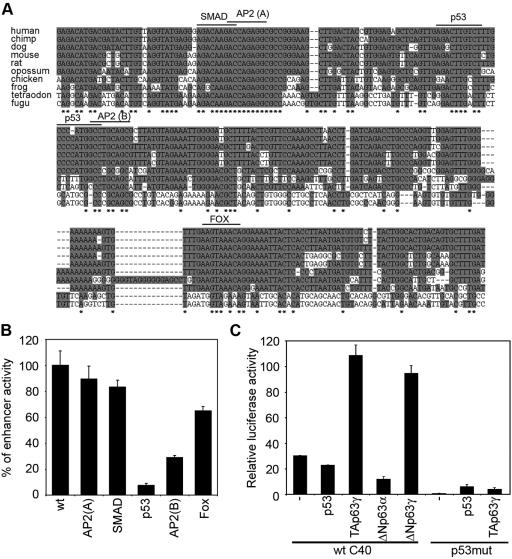FIG. 4.
Evolutionary conservation of the C40 enhancer and its functional response to p63. (A) Multiple sequence alignment of the C40 enhancer showing a high level of conservation among several vertebrate sequences. Conserved nucleotides are shown in gray, and nucleotides that are identical in all species are indicated by stars. The conserved binding sites for SMAD, AP-2(A) and AP-2(B), p53, and Fox are indicated. (B) Mutations in the conserved binding sites were tested by transient transfection in mouse primary keratinocytes for their ability to affect C40 enhancer activity. The C40-TK-Luc construct was mutated in the indicated binding site. Data are presented as percentages of enhancer activity compared to that with the wild-type control (wt). (C) p63 controls the C40 enhancer activity in mouse primary keratinocytes. Wild-type C40-TK-Luc (wt C40) was transiently transfected into keratinocytes in the absence (−) or in the presence of expression constructs for p53, TAp63γ, ΔNp63γ, and ΔNp63α. As a control, the C40 enhancer carrying a mutation in the p53 binding site (p53mut) was transfected alone or with TAp63γ.

